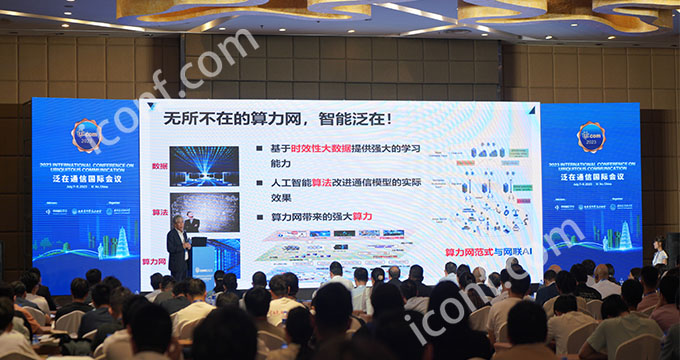Submitting a paper to an academic conference involves several steps to ensure your work is presented professionally and meets the conference's standards. Here's a comprehensive guide:

1. Research and Choose the Right Conference:
- Identify Conferences: Use platforms like iconf.com to find conferences relevant to your research interests, themes, and deadlines.
- Check Reputation: Ensure the conference is reputable, well-organized, and aligned with your field.
- Read the Call for Papers (CFP): Understand the conference's focus, submission guidelines, and deadlines.
2. Prepare Your Paper:
- Format: Adhere to the conference's formatting guidelines regarding paper length, font, margins, and citation style.
- Content:
- Title: Clear, concise, and reflective of your research.
- Abstract: A brief summary of your research, objectives, methods, results, and conclusions.
- Introduction: Introduce the research problem, objectives, and significance.
- Literature Review: Discuss relevant existing research and how your work contributes to the field.
- Methodology: Detail the methods used in your research.
- Results: Present your findings clearly.
- Discussion: Interpret results, discuss implications, and suggest future research.
- Conclusion: Summarize key findings and their significance.
- References: Cite all sources according to the required citation style.
- Acknowledgements: If applicable, acknowledge funding sources or collaborators.
3. Review and Edit:
- Self-Review: Check for clarity, coherence, and adherence to guidelines.
- Peer Review: Ask colleagues or mentors to review your paper for feedback.
- Professional Editing: Consider professional editing services if English is not your first language or for fine-tuning.
4. Create an Account:
- Conference Website: Visit the conference website and create an account if required for submission.
5. Submission Process:
Abstract Submission:
- If required, submit an abstract first. Ensure it adheres to word limits and follows the format specified in the CFP.
- Include keywords for indexing and search purposes.
Full Paper Submission:
- Submission System: Use the conference's submission system (e.g., EasyChair, ConfTool).
- Upload Files: Upload your paper in the required format (PDF or Word, usually).
- Author Information: Provide details for all authors, including affiliations and contact information.
- Keywords: Add relevant keywords for indexing.
- Submission Category: Choose the appropriate track or category for your paper.
- Confirm Submission: Ensure all information is correct before submitting.
6. Wait for Review:
- Peer Review: Your paper will undergo a peer-review process. This might take several weeks.
- Notification: You'll receive a notification of acceptance, rejection, or acceptance with revisions.
7. Revise and Resubmit (if necessary):
- Revise: If your paper is accepted with revisions, make the necessary changes based on reviewer feedback.
- Resubmit: Upload the revised version by the deadline provided.
8. Acceptance and Preparation:
- Acceptance: If accepted, you'll receive instructions for final submission, registration, and presentation.
- Registration: Register for the conference, which often includes paying a fee.
- Presentation Preparation:
- Prepare slides or posters according to the conference guidelines.
- Practice your presentation to ensure clarity and adherence to time limits.
9. Final Submission:
- Camera-Ready Paper: Submit the final version of your paper, often called the "camera-ready" version, by the deadline.
- Copyright Form: Complete and submit any required copyright forms or permissions.
10. Attend the Conference:
- Travel and Accommodation: Make necessary travel arrangements if the conference is in-person.
- Presentation: Present your paper at the conference, engage with attendees, and network.
- Participation: Attend sessions, workshops, and networking events to maximize your conference experience.
11. Post-Conference:
- Proceedings: Your paper will likely be published in the conference proceedings.
- Feedback: Use feedback from the conference to refine your work for future publication or presentations.
- Networking: Follow up with contacts made during the conference for potential collaborations.
Tips for a Successful Submission:
- Start Early: Begin preparing your paper well in advance of the deadline.
- Follow Guidelines: Adhere strictly to submission guidelines to avoid disqualification.
- Engage with Feedback: Use reviewer feedback constructively to improve your work.
- Stay Organized: Keep track of deadlines, acceptance notifications, and conference dates.
- Network: Engage with the academic community through platforms like iconf.com to stay updated and network with peers.
Remember, submitting a conference paper is not just about presenting your research; it's about contributing to the academic community, gaining recognition, and advancing your career. Use platforms like iconf.com to keep track of upcoming conferences, submission deadlines, and review processes to ensure a smooth submission experience.


